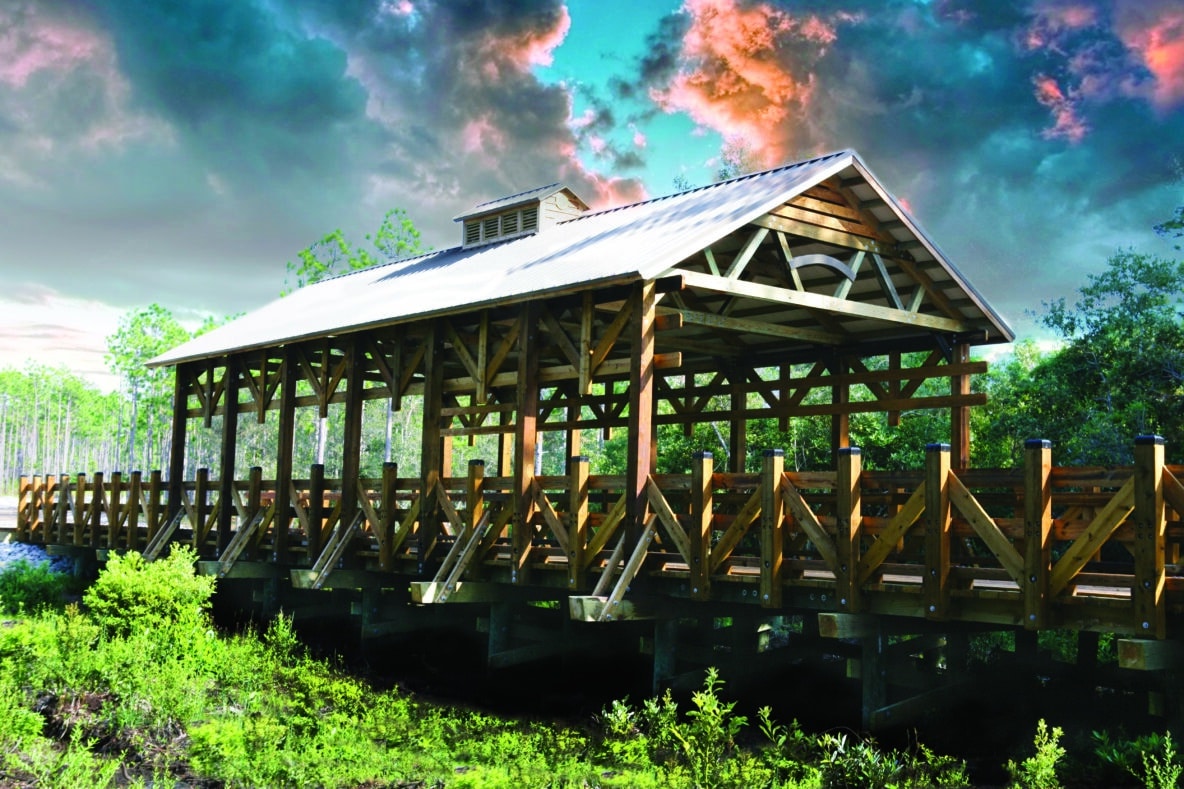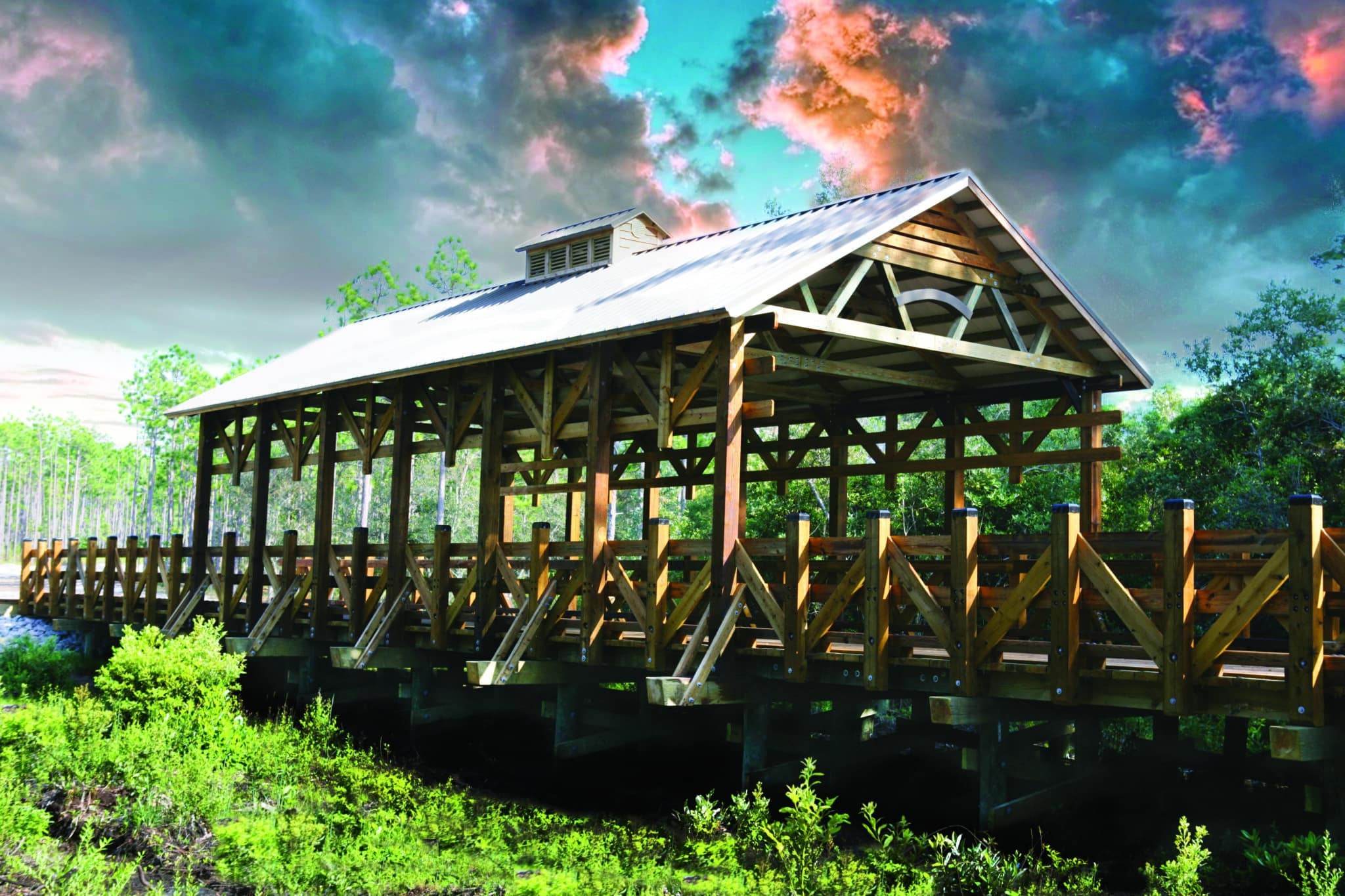
Covered Wood Bridges: Old world charm with modern engineering
Covered bridges have long captured the imagination of people around the world. These structures, often nestled in picturesque rural landscapes, evoke a sense of nostalgia and history while showcasing the ingenuity of early bridge builders. Today, covered bridges remain symbols of craftsmanship and heritage, but they are also gaining renewed attention for their practical benefits and modern applications. This comprehensive guide explores the history of covered bridges, the advantages they offer, and how they are being used in contemporary settings by companies like York Bridge Concepts.
The History of Covered wooden bridges
origins & Early Development
The origins of covered bridges can be traced back to ancient times, with the first known examples appearing in China around 2,000 years ago. These early bridges were primarily built from wood, taking advantage of the material's availability and ease of construction. The concept of covering a bridge with a roof and walls was not initially about aesthetics but rather practicality. The covering served to protect the wooden structural elements from the elements, extending the bridge’s lifespan.
In Europe, covered bridges became more common during the medieval period, particularly in regions where timber was abundant. The famous Kapellbrücke (Chapel Bridge) in Lucerne, Switzerland, constructed in 1333, is one of the oldest surviving covered bridges in the world. This bridge not only served a functional purpose but also became a prominent cultural landmark, adorned with paintings that depicted important historical events.
The Golden Age of covered wood bridges in america
The concept of covered bridges was brought to North America by European settlers. The first known covered bridge in the United States, the Permanent Bridge over the Schuylkill River in Philadelphia, was completed in 1805. Designed by Timothy Palmer, this bridge set the stage for what would become a defining feature of American rural landscapes.
Throughout the 19th century, thousands of covered bridges were built across the United States, particularly in the Northeast, Midwest, and South. These bridges were essential for connecting communities, facilitating trade, and supporting the expansion of the American frontier. The covering provided crucial protection against rain, snow, and sun, helping to preserve the wooden trusses and extend the life of the bridge.
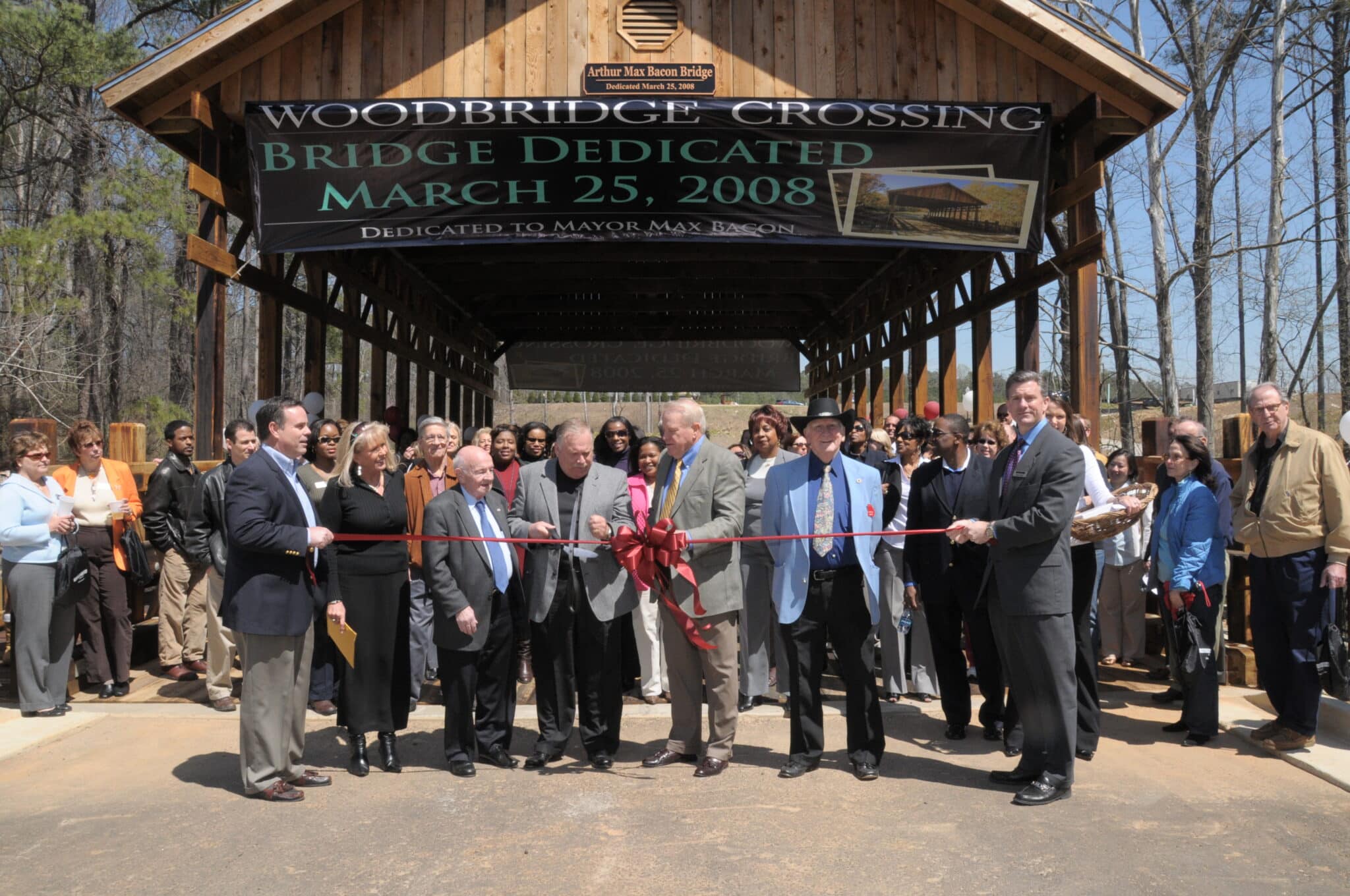
Preservation Efforts of Covered wood bridges
The rise of steel and concrete as preferred construction materials in the late 19th and early 20th centuries led to the decline of covered bridges. Many were replaced by modern structures, and those that remained often fell into disrepair. However, the mid-20th century saw a growing appreciation for these historic bridges, leading to efforts to preserve and restore them.
Today, covered bridges are celebrated as cultural and historical treasures. In the United States, many states have dedicated resources to the preservation of these bridges, recognizing their value not only as functional structures but also as symbols of a bygone era. Organizations and local communities have also played a key role in maintaining, restoring and building new covered wood bridges, ensuring their continued presence in the landscape.
Benefits of Covered Wood Bridges
Protection of Structural Elements
One of the primary benefits of covered bridges is the protection they provide to the wooden structural elements. Wood, while strong and durable, can be susceptible to damage from moisture, ultraviolet light, and temperature fluctuations. By enclosing the bridge with a roof and walls, the timber is shielded from the elements, significantly extending the life of the bridge. This was particularly important in the 19th century when the cost and effort required to replace wooden bridge components were considerable.
Aesthetic Appeal and Cultural Significance
Covered bridges are widely admired for their aesthetic qualities. The use of wood, combined with traditional construction techniques, gives these bridges a warm, inviting appearance that complements natural landscapes. Many covered bridges have become iconic landmarks, drawing tourists and photographers who appreciate their beauty and historical significance.
In addition to their visual appeal, covered bridges hold cultural value. They are often associated with a simpler, more pastoral way of life and are featured prominently in American folklore and literature. For many, covered bridges evoke a sense of nostalgia and connection to the past, making them important symbols of regional identity.
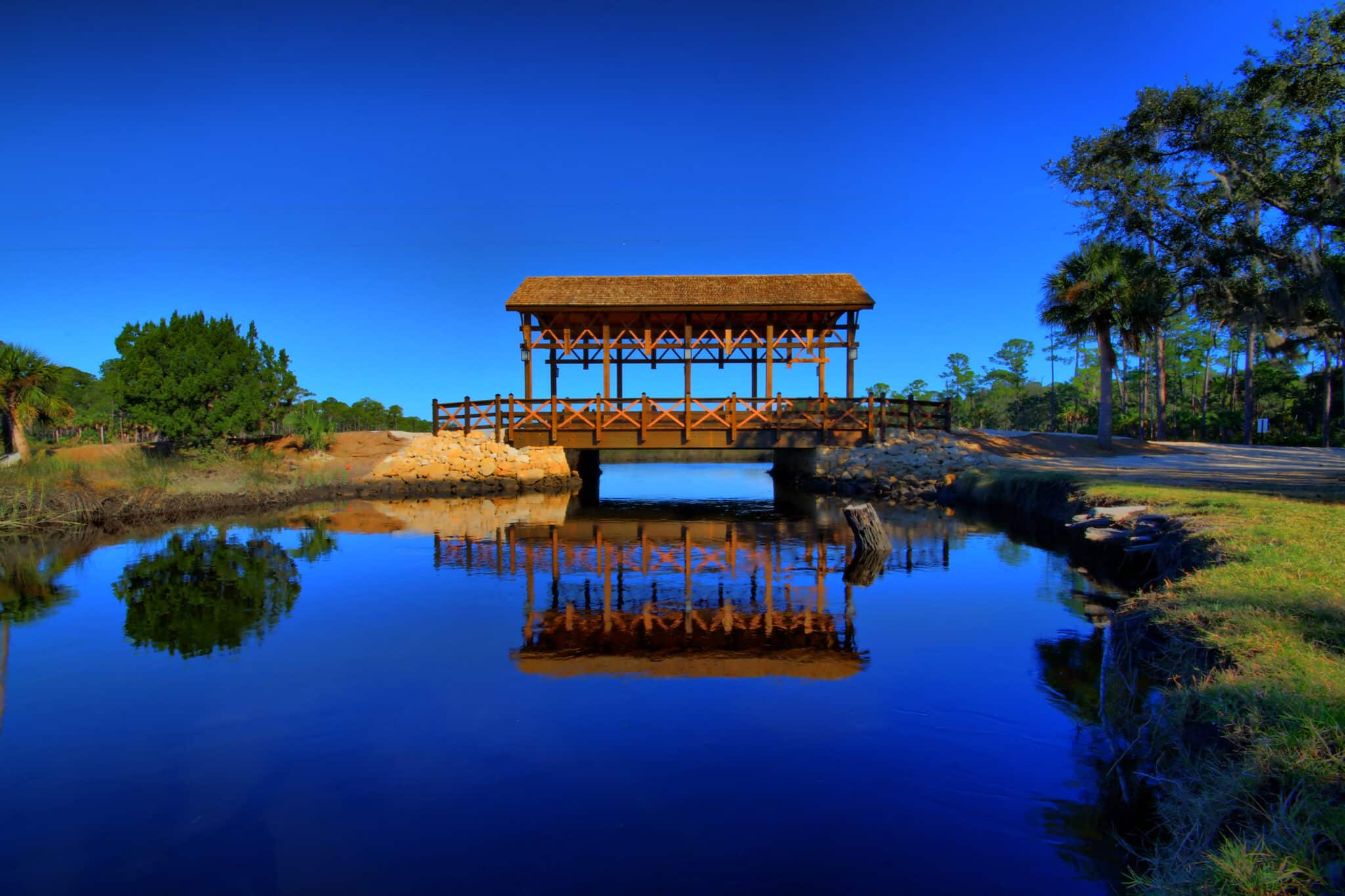
Preservation Efforts of Covered wood bridges
The rise of steel and concrete as preferred construction materials in the late 19th and early 20th centuries led to the decline of covered bridges. Many were replaced by modern structures, and those that remained often fell into disrepair. However, the mid-20th century saw a growing appreciation for these historic bridges, leading to efforts to preserve and restore them.
Today, covered bridges are celebrated as cultural and historical treasures. In the United States, many states have dedicated resources to the preservation of these bridges, recognizing their value not only as functional structures but also as symbols of a bygone era. Organizations and local communities have also played a key role in maintaining, restoring and building new covered wood bridges, ensuring their continued presence in the landscape.
Durability & Longevity of Covered wood bridges
The durability of covered bridges is one of their most significant advantages. Historical records show that many covered bridges built in the 19th century have survived into the 21st century, a testament to the effectiveness of their design. The covering not only protects the timber from decay but also helps prevent structural damage caused by freeze-thaw cycles, reducing the need for frequent repairs.
York Bridge Concepts' covered wooden bridges use modern preservation techniques and materials to have a 75+ year design lifespan.
Sustainability & Environmental Benefits
In an era where sustainability is increasingly prioritized, covered bridges offer an eco-friendly alternative to steel and concrete structures. Wood is a renewable resource, and when sourced from responsibly managed forests, it has a much lower carbon footprint than other construction materials. The preservation of covered bridges also aligns with sustainable practices, as maintaining and restoring existing structures reduces the need for new materials and minimizes environmental impact.
Modern Applications of Covered Wood bridges
Contemporary Covered Bridge Construction
While many of the covered bridges that exist today are historical structures, there is a growing interest in constructing new covered bridges that combine traditional aesthetics with modern engineering. Companies like York Bridge Concepts specialize in designing and building covered bridges that meet contemporary needs while preserving the timeless appeal of these structures.
Modern covered bridges are often constructed using advanced wood products, such as laminated veneer lumber (LVL) and cross-laminated timber (CLT), which offer superior strength and durability. These materials allow for greater flexibility in design, enabling the construction of longer spans and more complex geometries. Additionally, modern construction techniques and tools have improved the precision and efficiency of building covered bridges, ensuring that they meet today’s safety and performance standards.
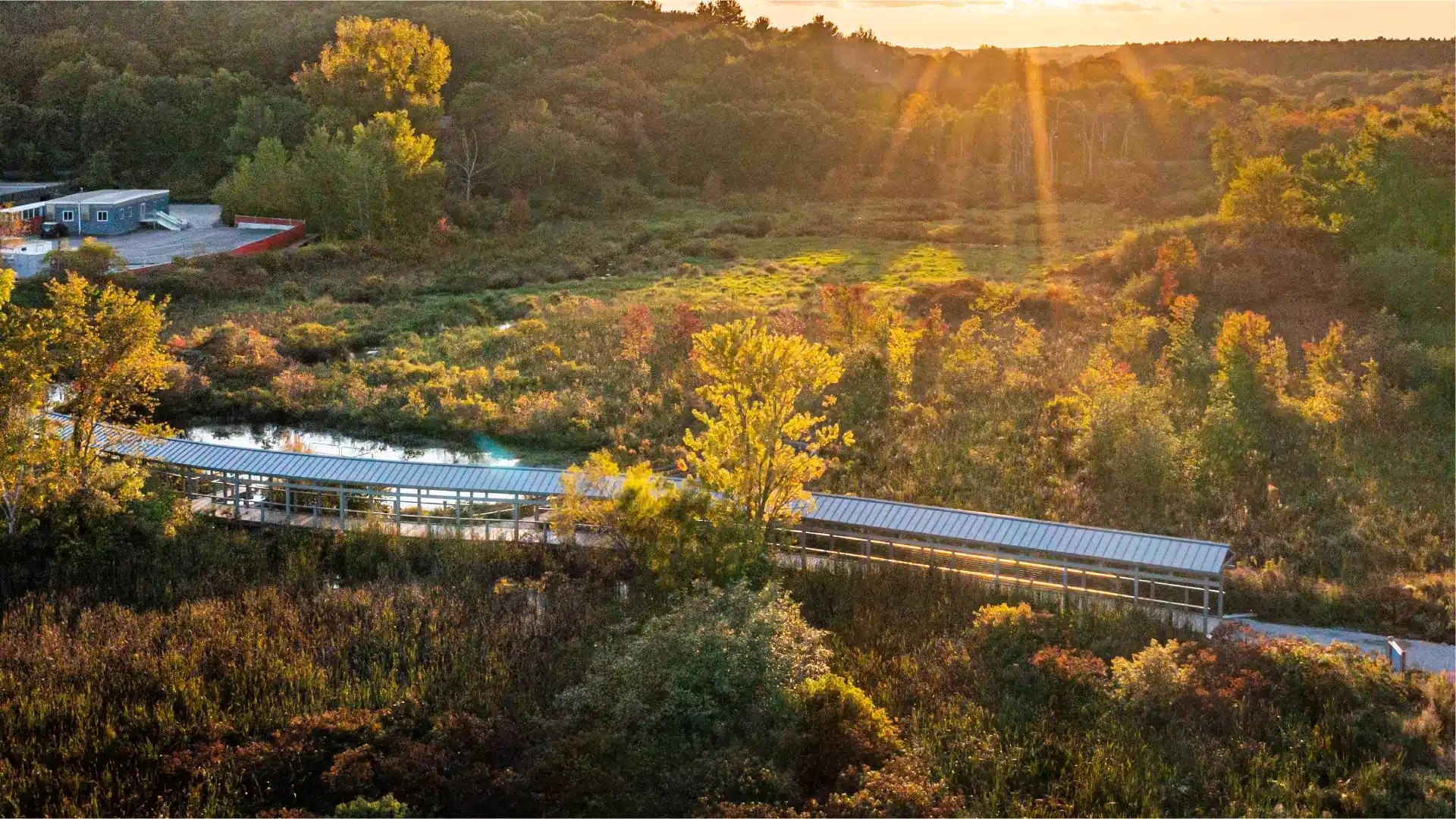
Applications in Urban and Rural Settings
Covered bridges are not just limited to rural settings; they are increasingly being incorporated into urban environments as well. In cities, covered pedestrian bridges provide safe and aesthetically pleasing crossings over roads, railways, and waterways. These bridges can serve as gateways to parks, greenways, and cultural districts, enhancing the urban landscape while offering practical connectivity.
In rural areas, covered bridges continue to serve as vital links between communities, particularly in regions where preserving the historical character of the landscape is important. They are often used in parks, nature reserves, and other scenic locations, where their traditional design complements the natural surroundings.
Innovative Uses & Adaptations of covered wooden bridges
The versatility of covered wood bridges allows them to be adapted for a wide range of uses beyond traditional vehicle and pedestrian crossings. For example, some covered bridges have been repurposed as event spaces, market stalls, or even outdoor classrooms. Their enclosed design provides shelter from the elements, making them suitable for various functions throughout the year.
In addition to their practical uses, covered bridges are being incorporated into green infrastructure projects. For instance, they can be part of wildlife corridors, allowing animals to safely cross roads and rivers without disrupting human activities. In some cases, covered bridges are used to support renewable energy initiatives, such as solar panels mounted on the roof to generate electricity for nearby facilities.
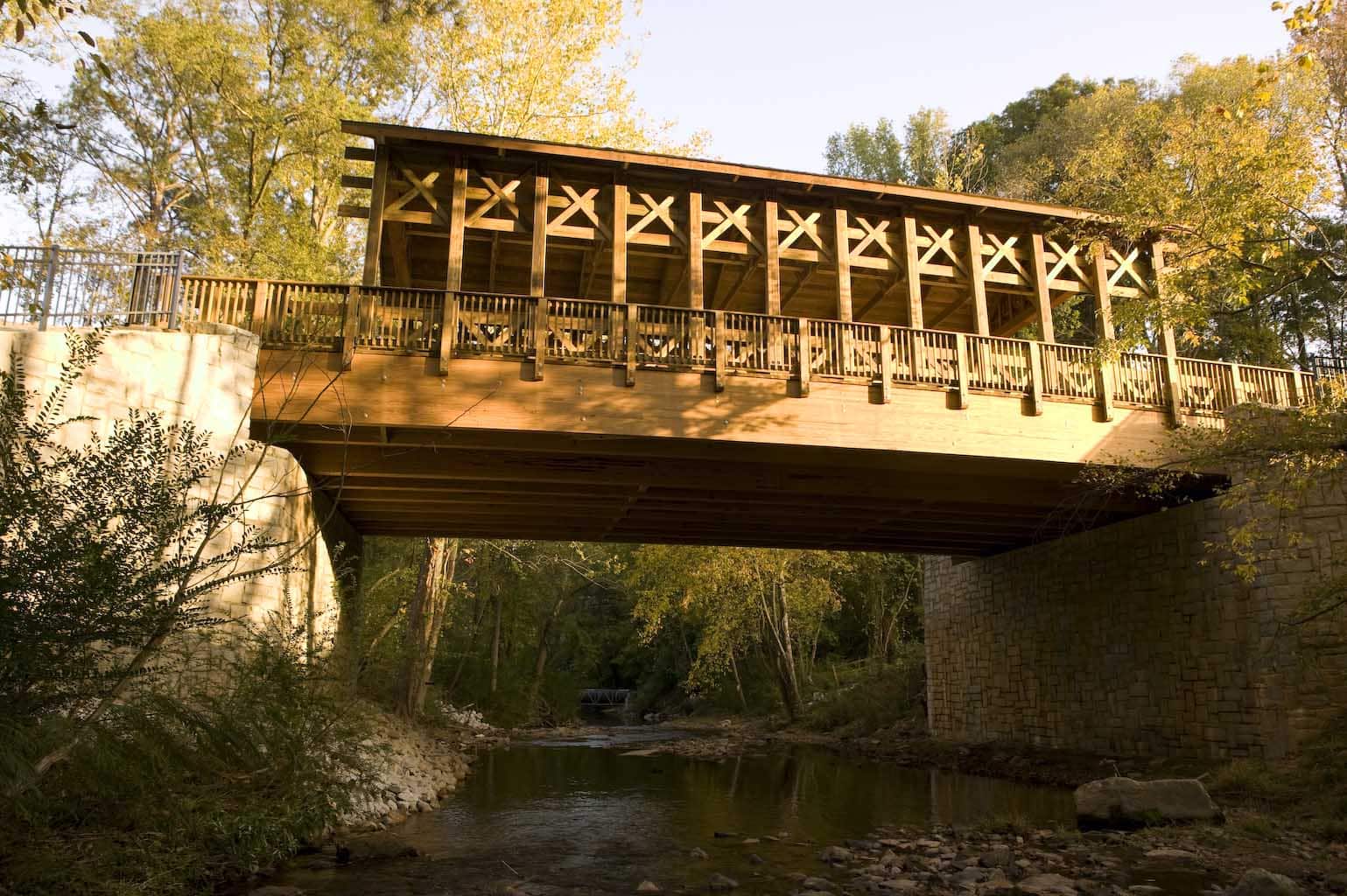
Case Studies & Examples of Covered Wood Bridges
York Bridge Concepts has been at the forefront of constructing new covered bridges that blend historical craftsmanship with modern innovation. One notable project is the construction of a covered wood vehicular bridge in Smyrna, Georgia, designed to provide a safe and accessible crossing while enhancing the communities aesthetic appeal. This bridge features a traditional timber truss design with modern materials and finishes, ensuring durability and longevity.
Another example is a wooden covered pedestrian bridge in Massachusetts, designed for a public school, Douglas Gates, where the goal was to create a functional yet visually striking entrance for students & visitors. The bridge’s design incorporated elements of local architecture and landscape, resulting in a structure that harmonizes with its surroundings while providing a secure and durable crossing.
sustainability & future trends
As sustainability becomes an increasingly important consideration in infrastructure development, covered bridges are well-positioned to play a key role in future projects. The use of sustainably sourced wood, combined with the potential for incorporating renewable energy technologies, makes covered bridges an attractive option for eco-conscious communities and developers.
Future trends in covered bridge construction may include greater integration with smart infrastructure, such as sensors that monitor the structural health of the bridge and provide real-time data on its condition. Additionally, there is potential for the use of sustainable construction techniques to streamline construction and reduce environmental impact, further enhancing the sustainability of covered bridges.
get started with an iconic covered wooden bridge for your community?
If you’re interested in learning more about covered bridges or want to explore how a covered bridge could enhance your property or community, contact York Bridge Concepts today. Our team of experts is here to help you every step of the way, from design to construction, ensuring that your bridge is built to last and meets all your needs.

